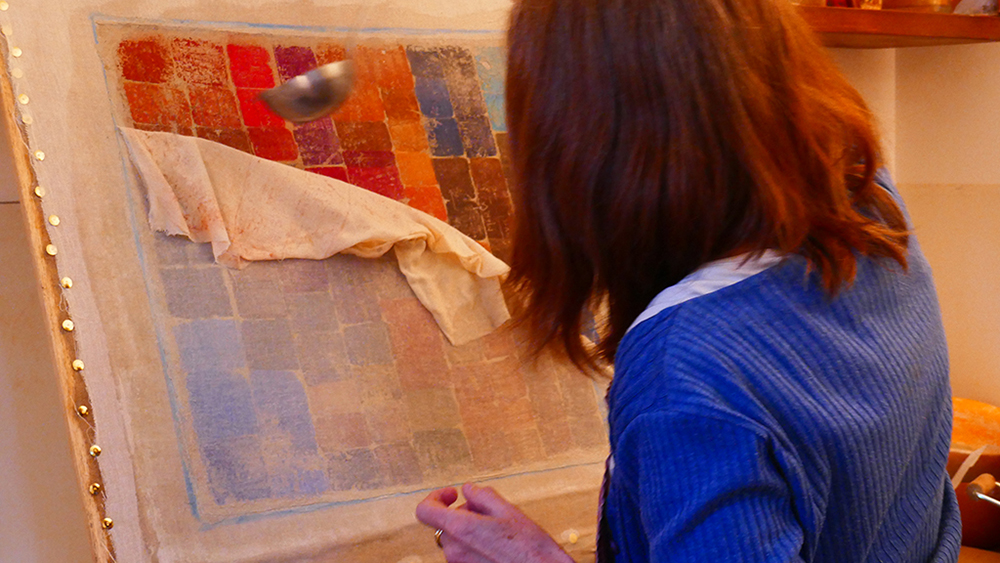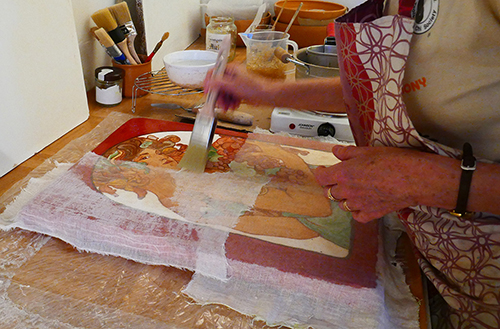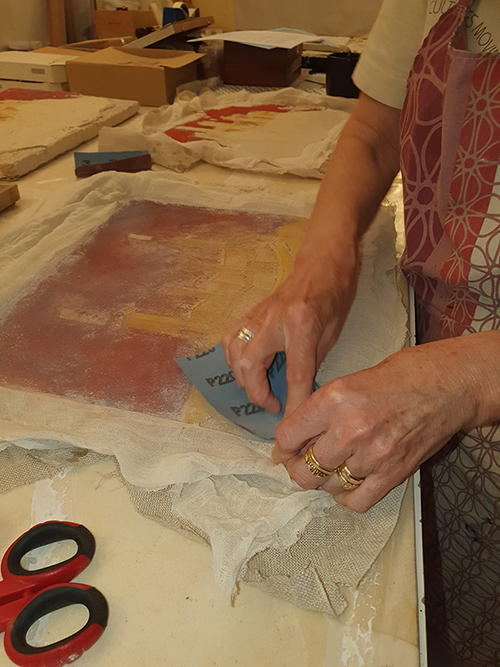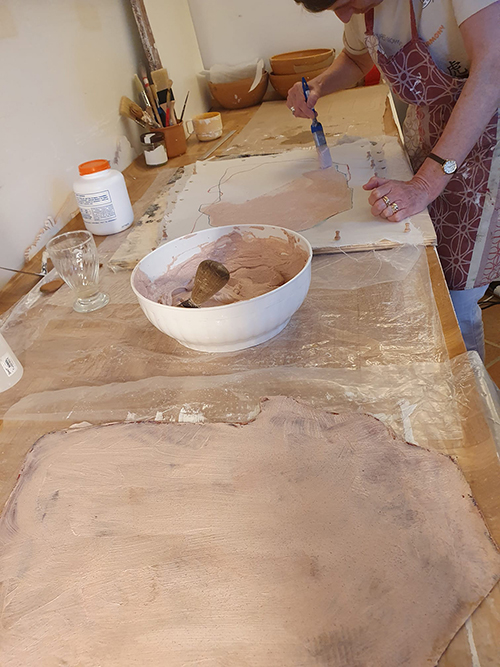
I took part in a strappo course in Rome, thanks to my QEST Anthony and Elizabeth Mellows Charitable Settlement Scholarship. This, the final part, follows on from my study visit to Naples and Rome and my gold leaf course in Bosa, Sardinia.
Strappo is Italian for tear (the ripping, not the crying kind). It is a museum technique which was designed to remove frescoes from their original site, such as the wall of a Roman house or a medieval church, and attach it to a lightweight portable surface, perhaps for exhibition purposes. For example, it was used during the floods in Florence in 1966 to save many frescoes from damage.
Patrizia Gioia, an expert in fresco techniques, took me through the stages in a one to one two day course at her studio in Rome. Basically, strappo involves sticking cloth on to the fresco and later ripping it off. Then it is stuck down on the new surface and the cloth is steamed off.
Strappo is not quite as simple as that however. Much depends on the kind of cloth you use, the different glues and the length of waiting time between stages. As some stages require a long waiting time (up to two months), it was not possible to do strappo in real time over two days. Patrizia had prepared the various stages with old frescoes left behind by previous students. She went through the theory with a power-point presentation and then we tackled the various stages in the order that was convenient, which was not the same as the actual order although, to make sense here, I will put it in the correct order.
First we used hot cow bone glue to stick a layer of fine calico then a layer of fine linen onto the fresco. After a supposed wait of about two months, I ripped it off. The glue penetrates the lime plaster a few milimeters and, when torn, it breaks at the weak point causing the painted layer to come away on the cloth. Sometimes a bit of colour is left on the original surface.
Afterwards, I scraped off any loose plaster from the back of the cloth, sanded it down then cut off the excess cloth. Next, I prepared a temporary wooden frame, covering it with a layer of linen then a layer of calico. Onto this, I spread a mixture of lime putty, cocciopesto (crushed terracotta) and PVA. In the old days they would have used various waxes and varnish. This gave a kind of bedding and I put the same on the back of the ripped off fresco. These were then brought together and weighted down.
The final stage is the reveal. After sufficient drying time, I used boiling water to remove the layers of linen and calico that were stuck on by the cow bone glue (water soluble) but did not shift the PVA mix (not water soluble). This is the fun bit and it takes a while. Slowly, the pieces of cloth are removed, revealing the fresco now on the new cloth and PVA mix. This can be put on a permanent frame, stuck onto a wooden panel or even, perhaps, wedged between two layers of Perspex. The surround can be painted with the same bedding mix.
Some erosion usually occurs, with the transferred image losing some small parts. I like this because it is surprising and interesting, giving the transferred fresco a look of age, fragmentation and intrigue. I hope to exploit this in future and may even collage some strappos together, revealing layers below like palimpsests. You see this effect where, for example, the Byzantines painted over Roman frescoes but kept bits of them..
I learned a lot on the QEST Strappo Course and would like to thank QEST for all their support.




